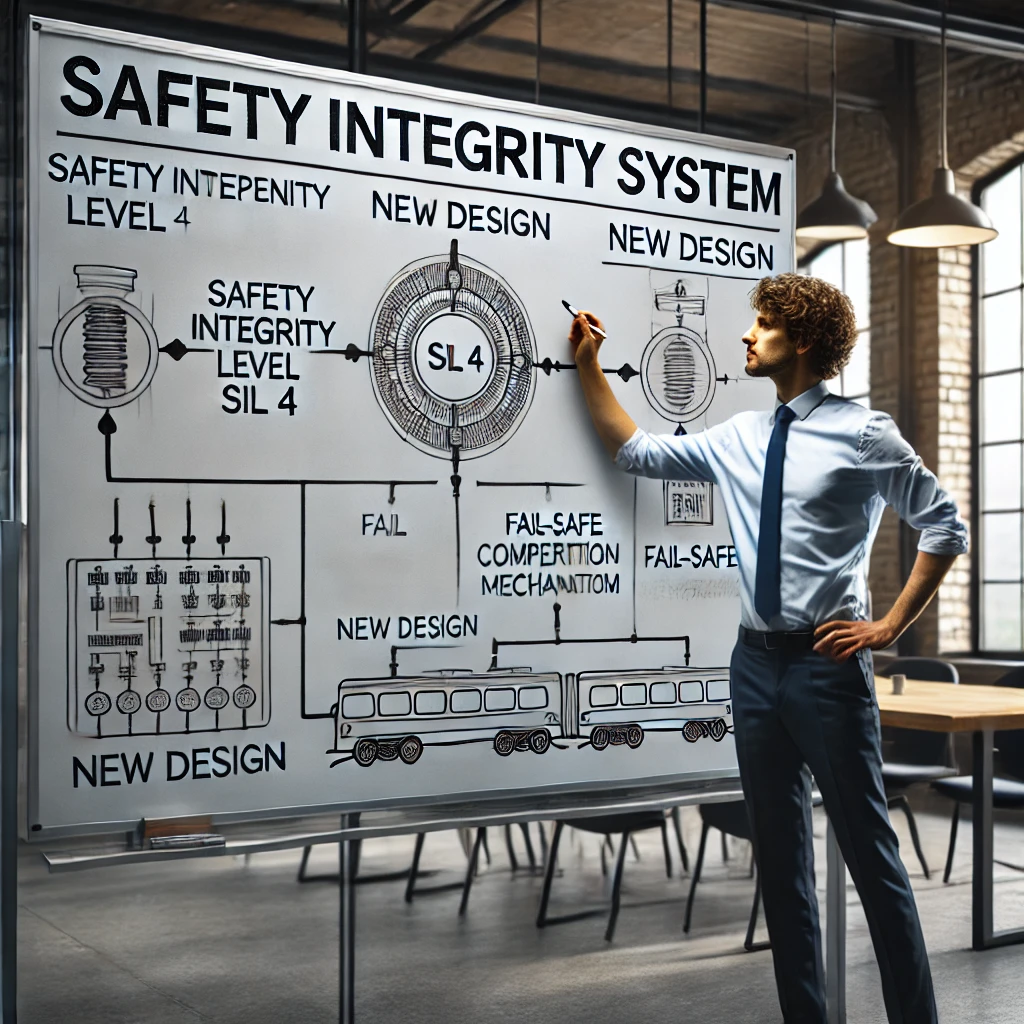What Does SIL Mean in Railway Safety Standards?
Safety is a top priority in the railway industry, and one key concept that plays a crucial role in ensuring system reliability is SIL – Safety Integrity Level. But what exactly does SIL mean, and why is it important in railway safety standards? In this post, we’ll break down the fundamentals of SIL, how it is classified, and why it matters for railway projects.
What is SIL (Safety Integrity Level)?
SIL is a measurement of the reliability and performance of safety functions in systems where failures could lead to hazardous situations. It is commonly used in industries like railways, automotive, and process automation to classify the effectiveness of safety measures in reducing risks.
How is SIL Classified?
There are four SIL levels (SIL 1 to SIL 4), each representing a progressively higher level of risk reduction. The classification is based on the probability of failure and the required safety measures:
| SIL Level | Risk Reduction Factor | Probability of Failure Per Hour (PFH) |
|---|---|---|
| SIL 1 | 10 to 100 | 10⁻⁶ to 10⁻⁵ |
| SIL 2 | 100 to 1,000 | 10⁻⁷ to 10⁻⁶ |
| SIL 3 | 1,000 to 10,000 | 10⁻⁸ to 10⁻⁷ |
| SIL 4 | 10,000 to 100,000 | 10⁻⁹ to 10⁻⁸ |
The higher the SIL level, the more stringent the requirements for system design, testing, and validation.
Why is SIL Important in Railway Safety?
SIL ensures that safety-critical systems meet strict reliability and risk reduction requirements. In railway projects, SIL is applied to components such as:
- Signaling Systems: Ensuring safe train movements.
- Automatic Train Protection (ATP): Preventing collisions by enforcing speed restrictions.
- Brake Control Systems: Guaranteeing safe stopping mechanisms.
- Level Crossing Protection: Preventing accidents at intersections.
Key Standards Governing SIL in Railways
- Several international standards define SIL requirements in railway safety:
- EN 50126 – Covers the RAMS (Reliability, Availability, Maintainability, and Safety) lifecycle.
- EN 50128 – Focuses on safety-related railway software.
- EN 50129 – Specifies the safety requirements for electronic railway signaling systems.
How to Achieve SIL Certification?
- Perform a Hazard and Risk Analysis – Identify the system’s potential risks and required SIL level.
- Design and Implement Safety Measures – Incorporate redundancy, fault detection, and fail-safe mechanisms.
- Validation and Verification – Conduct extensive testing to ensure compliance with SIL requirements.
- Independent Safety Assessment (ISA) – Obtain third-party verification to certify SIL compliance.
Common Challenges in Achieving SIL Compliance
- Balancing Cost vs. Safety: Higher SIL levels require extensive testing and design efforts, increasing project costs.
- Complex Documentation: Detailed records must be maintained to justify the assigned SIL level.
- Meeting Strict Standards: Compliance with EN 50126, EN 50128, and EN 50129 requires deep technical expertise.
Conclusion
Understanding SIL is critical for railway safety professionals working on signaling, train control, and infrastructure systems. By ensuring compliance with SIL standards, railway operators and manufacturers can enhance safety, reduce risks, and improve overall system reliability.
Interested in learning more about SIL and its impact on railway safety? Explore our consulting services or enroll in our RAMS training programs for expert guidance on SIL certification and implementation.
- What to Do: Maintain detailed records of all steps, including the methodology, results, and justifications.
Common Challenges in Achieving SIL Compliance
- Balancing Cost vs. Safety: Higher SIL levels require extensive testing and design efforts, increasing project costs.
- Complex Documentation: Detailed records must be maintained to justify the assigned SIL level.
- Meeting Strict Standards: Compliance with EN 50126, EN 50128, and EN 50129 requires deep technical expertise.

Conclusion
Understanding SIL is critical for railway safety professionals working on signaling, train control, and infrastructure systems. By ensuring compliance with SIL standards, railway operators and manufacturers can enhance safety, reduce risks, and improve overall system reliability.
Interested in learning more about SIL and its impact on railway safety? Explore our consulting services or enroll in our RAMS training programs for expert guidance on SIL certification and implementation.
What to Do: Maintain detailed records of all steps, including the methodology, results, and justifications.
!
